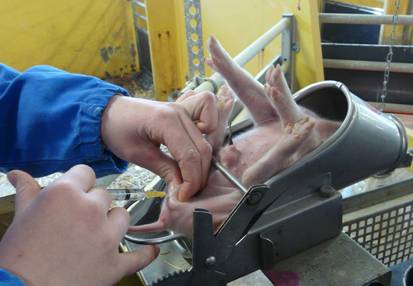Anaesthesia combined with castration
Anaesthesia can be used before castration to relieve pain but its use is only mandatory in Switzerland and Norway.
Definition: Anaesthesia and analgesia
Anaesthesia is the condition of having blocked (or temporary taken away) sensation, including the feeling of pain. It allows the animal to undergo surgery without the pain and distress they would otherwise experience. The injection of anaesthetics can cause a loss of sensation and the injection of analgesics causes a loss of pain (analgesia) by blocking the transmission of signals through nerves in or near the spinal cord.
Surgical castration of male piglets can be performed with either general or local anaesthesia. General anaesthesia is not considered possible to use for environmental, labour welfare safety and disease control reasons. Only a few pharmacological substances are licensed for use in piglets because other products risk leaving residues in meat. Some pharmaceuticals (such as. lidocaine) are allowed if handled by veterinarians and if a delay of 28 days before slaughter is allowed. However, even though sedation makes the piglets easier to handle during castration, it is not very effective in relieving pain. Therefore, in order to prevent post castration pain analgesia must be used in conjunction with local anaesthesia.

Injection of anaesthetic into the testis. Source: Monica Hansson
According to EFSA (2004) it must be remembered that most anaesthetic procedures may induce stress due to the additional handling and to the recovery associated with the anaesthesia itself. It may also induce pain during the injection process. Use of anaesthesia is also labour intensive and it is necessary to have expert knowledge (EFSA, 2004).